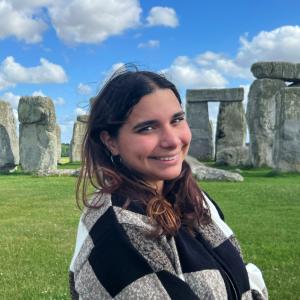
Ellie Anna Vaserman
MIT CEE | Professor Wilson H. Tang (1966) Research and Innovation Scholar
Insights into Ancient Roman Construction Utilizing Multiscale Characterization of Pompeiian Materials
2023-2024
Civil and Environmental Engineering
- Civil and Environmental Engineering
Admir Masic
Ancient Roman concrete is known for its longevity and strength, although the composition and production methods of this material remain unknown. Recent research suggests that quicklime (CaO) was directly added to Roman mortar and that the concrete was prepared on-site utilizing hot-mixing as the quicklime, water, pozzolana, aggregates, and other components reacted, resulting in a material that can heal cracks in itself over time. The eruption of Mount Vesuvius in 79 CE resulted in the preservation of the ancient Roman city of Pompeii as it was buried under volcanic ash. Prior to the eruption, earthquakes damaged structures in the region, leaving homes and frescoes in the stages of being repaired. Recent excavations have recovered preserved building materials, pre-mixed dry mortars, and tools from these sites. It is theorized that gypsum was used in the fresco mortar and that quicklime was used in structural mortar, but evidence of this has not been found. To determine whether this theory is supported, multi-method microstructure characterization will be performed on the excavated construction materials to determine particle size, elemental composition, and degree of crystallinity. This study serves as a preliminary look into the potential for multiscale characterization techniques to preserve cultural heritage sites and reveal details about resilient ancient engineering practices.
The reason I am participating in SuperUROP is to prepare me to pursue academia in the future. The part of my project that I am most excited about is that it takes the old adage of listening to your elders” literally, and applies it to science. My hope is that by leveraging modern technologies to extend studies into past civilizations, we could learn more about what we must do for a sustainable future, especially in the construction industry.
